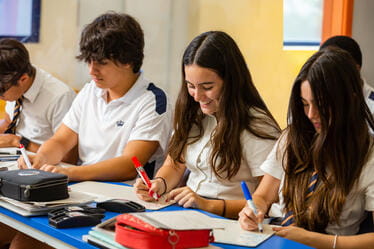We use cookies to improve your online experiences. To learn more and choose your cookies options, please refer to our cookie policy.


Recently I started to read a new book, or at least I thought it was new, not brand new, the book had been read before but I am a great lover of sharing books so a pre-read book was perfectly normal to me. I was about a quarter of the way through when some of the scenes had a sense of the familiar about them, I felt I had met the characters before, a few more pages in and I realised I had actually read the book before!
This concept of not remembering is not just for those with a few years behind us but also a common concept in the classroom. All teachers will have come across the feeling that they have delivered a superb lesson, when all the students have understood the content, all of them leaving the lesson with a big thumbs only to find that at the start the next lesson they look on to a sea of blank faces when they refer back to the previous lesson!
In order for children to remember, new learning has to be repeated and reinforced, memories are created as links between nerve cells in the brain, which form when the pathway is used several times. This is one of the basic differences between short term and long-term memory.
Short term memory is also referred to as ‘working’ memory where information stays when it first comes in. It is just a ‘holding memory ‘like a notebook. However, long-term memory can last days, weeks, years or forever. So how does information move from short-term memory to long-term memory?
There are essentially three ways this can happen:
Urgency – this is created via a release of stress hormones and is stored with an emotional marker. This frequently occurs after a serious incident such as an accident or threat, for example we can experience a feeling of anxiety if we pass the place where we involved in an accident.
Repetition - This is one of the best ways to learn facts or a new skill and to retain new information. This is used in our classrooms every day such as learning to tie our shoe laces, learning to play the piano, learning spelling and times tables and learning the flow of a story through *Talk 4 writing.
Young children especially enjoy learning by repetition, they love learning nursery rhymes and songs so the next time a child asks you to read a book yet again or wants you to play the same game over and over again, remember that repetition provides the practice that children need to master new skills.
Association (classical conditioning)- We use an example of this method in school to reinforce good behaviour where children are positively rewarded for displaying good behaviour, they associate reward for the efforts.
Our senses figure highly in learning by association, think about the time when a piece of music evokes a memory or when you smell baking and think of home. In school we use association in many other ways such as patterns or mnemonics. Examples used in school:
The order of the planets - My Very Excited Mother Just Served Us Nine Pies -
Mercury, Venus, Earth, Mars, Jupiter, Saturn, Uranus, Neptune, Pluto.
Coordinating conjunctions – FANBOYS – For, And, Nor, But, Or, Yet, So
The greater the association you can create between things you want to learn and something you already know, the easier it’ll be to remember.
I do believe the mind is like a muscle, the more we use it the better and more robust it becomes, the phrase ‘use it or lose it’ seems not just to apply to the body but to the mind as well – I shall continue to practice what I preach so I do not find myself unintentionally re-reading books!
*Talk 4 writing is an approach to learningdeveloped by Pie Corbett, it is a powerful technique we use in school, based on the principles of how people learn. The movement from imitation to innovation to independent application can be adapted to suit the needs of learners of any stage.